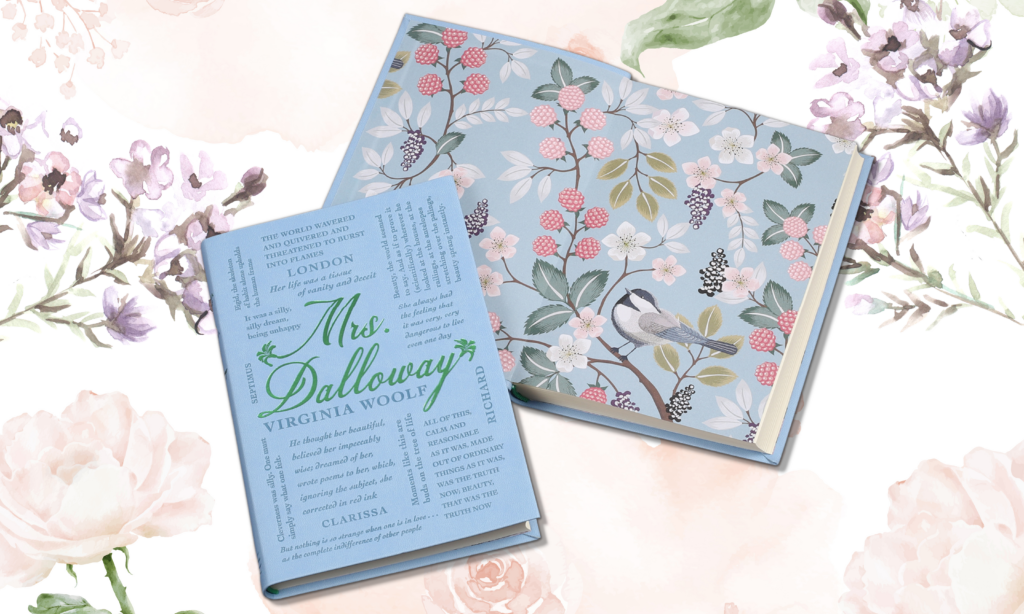
Virginia Woolf is a literary icon, her life, character, and work as fascinating today as they were in the early 20thcentury. Here are some interesting tidbits about the author of Mrs. Dalloway, on sale now in our Word Cloud Classics edition.
A Rare Education
Before she was Virginia Woolf, she was Adeline Virginia Stephen, daughter of Sir Leslie Stephen, a prominent editor of the 62-volume Dictionary of National Biography, the U.K.’s official encyclopedia of people of note. Virginia was educated at home by her father, as well as her two older brothers, both college professors. In the late 19th century, it wasn’t considered “proper” for a woman to be receive a formal education. Denied a traditional, institutional education and shamed of it, that inspired Woolf in her work and studies and made her a tenacious advocate for women’s education.
A Modern Woman
Woolf’s completely original literary style heralded a new literary movement: modernism. Along with James Joyce and Ernest Hemingway, Woolf dropped the flowery prose and presentational style that novelists had strictly adhered to for the previous 200 years or so. She succeeded in presenting stories that were more akin to reality, and reflected in how people really spoke and thought. Because reality itself was sometimes nonsensical and confusing, so too should the literature trying to explain and capture the human experience, thought Woolf.
The Bloomsbury Group
Virginia Woolf’s literary achievements sprung from her involvement with the Bloomsbury Group. After her parents died, the Stephen siblings moved from their country estate to a ramshackle London neighborhood, Bloomsbury, and created a salon, or a regular meeting of creative minds. It’s there that Virginia Stephen met (and married) established author Leonard Woolf, who championed Virginia’s work in periodicals, writing book reviews and literary criticisms. Together, they created Hogarth Press, which put into print works by then-unknowns like T.S. Eliot, E.M. Forster… and Virginia Woolf.
Inspiring Interiors
Woolf’s first major, commercially successful long-form works include the groundbreaking To the Lighthouse, with its non-linear, stream-of-consciousness, first-person narration, including stray thoughts and tangents. That book followed Mrs. Dalloway, the tale of a wealthy woman married to a politician; the story takes place almost entirely within the pieced-together thoughts of the characters.
Woolf and Women Writers
Even after her longer works took hold, Woolf still wrote criticism and essays, and her 1929 nonfiction book A Room of One’s Own, was based on a series of lectures on feminism she gave at Cambridge University. She argued that women had been excluded from literary circles for so long that they needed concessions to unlock their authorial voices, such as annual stipends and private residences set up for promising female writers. While this exact program never took flight, Woolf’s idea is widely regarded as the creation of the arts grant.
Don't Be Afraid
In addition to her own monumentally famous and important works like Mrs. Dalloway, To the Lighthouse, and A Room of One’s Own, Woolf is closely associated with Edward Albee’s award-winning 1962 play Who’s Afraid of Virginia Woolf? It’s a brutal four-character piece about a crumbling marriage and doesn’t have anything to do specifically with the founder of modernism. Woolf, like Albee, came from an upper-crust family and also dealt with themes of the illusions under which such people operated. “Who’s afraid of Virginia Woolf means who’s afraid of the big bad wolf,” Albee once said. “Who’s afraid of living without false illusions?”
If you liked this article, check out the original article and read Canterbury Classics’ brand-new, special edition of Virginia Woolf’s Mrs. Dalloway. It’s available now.








